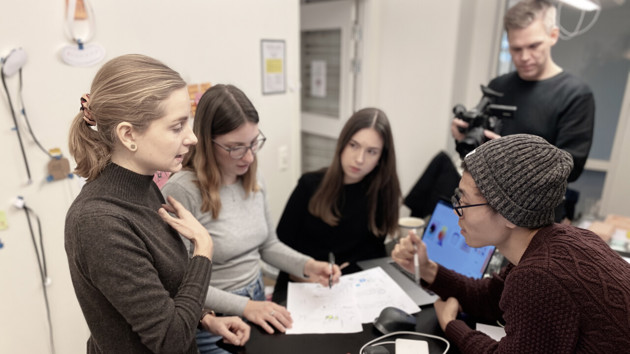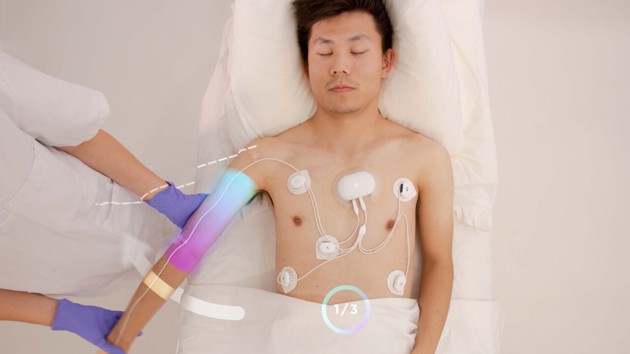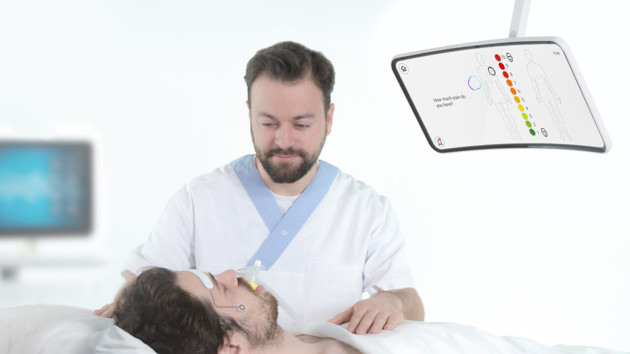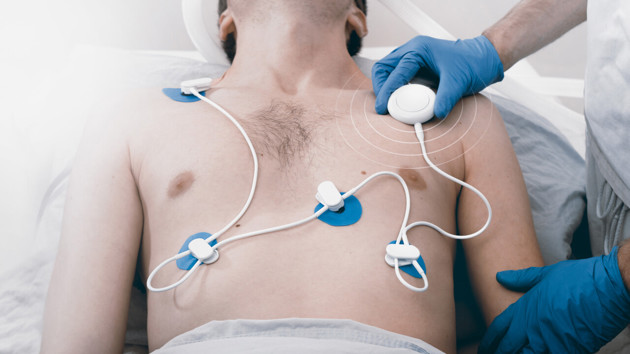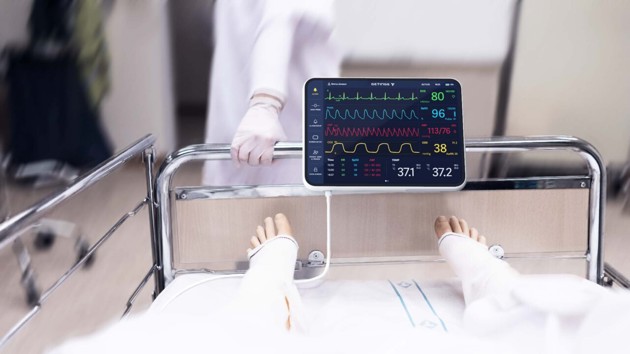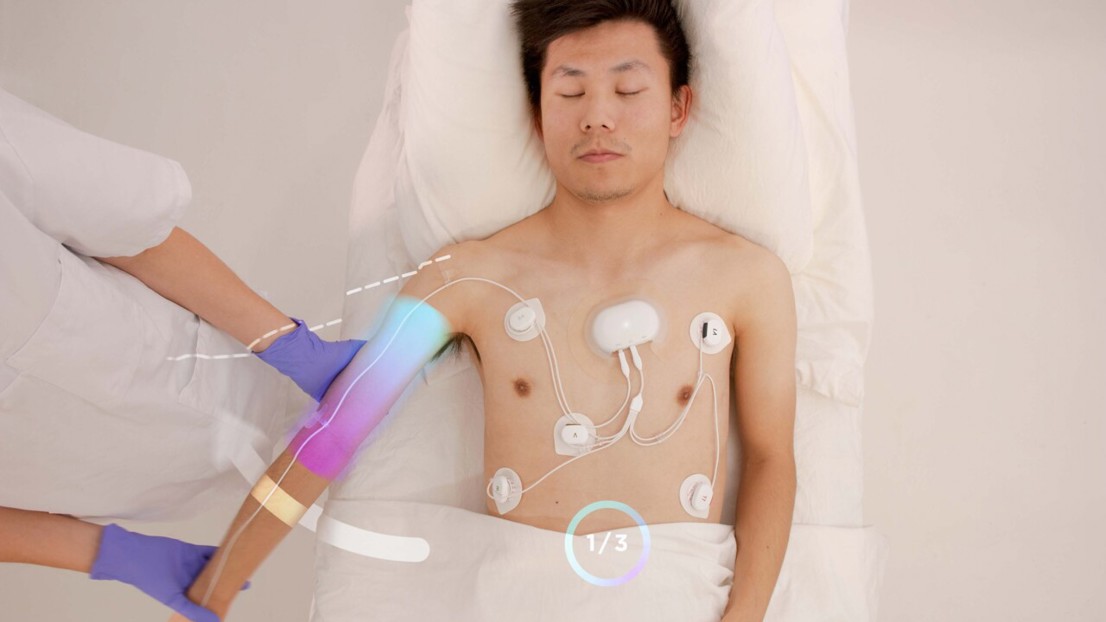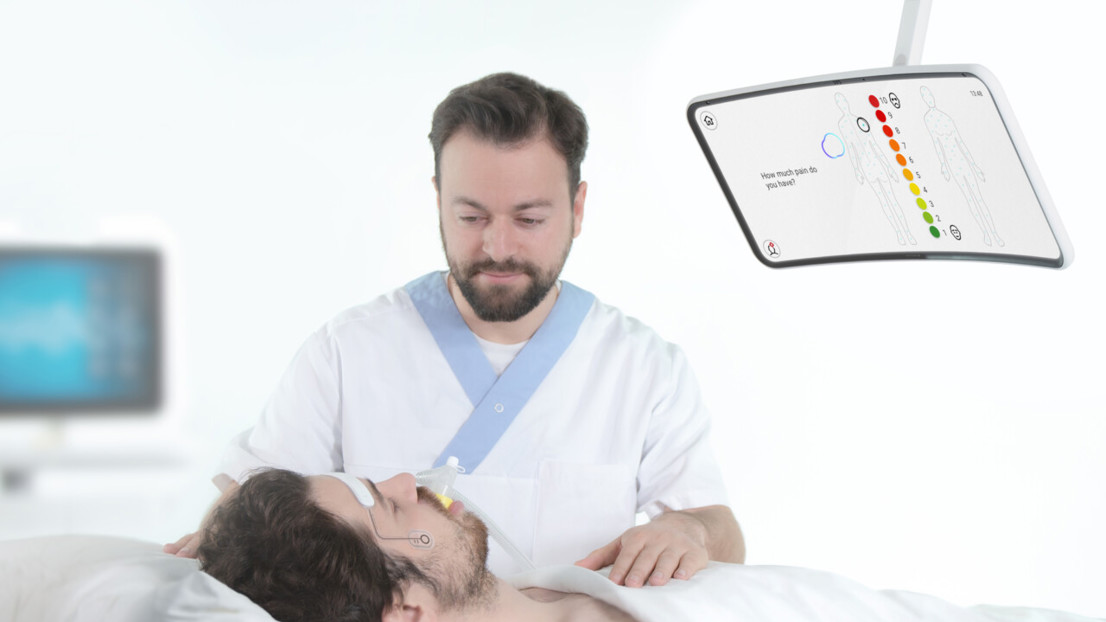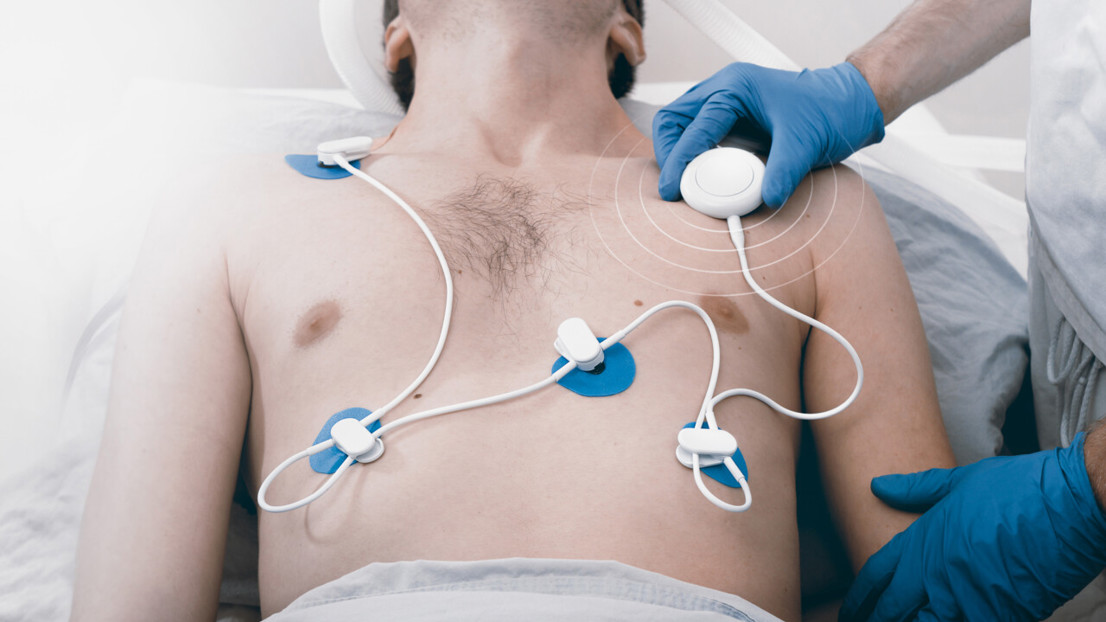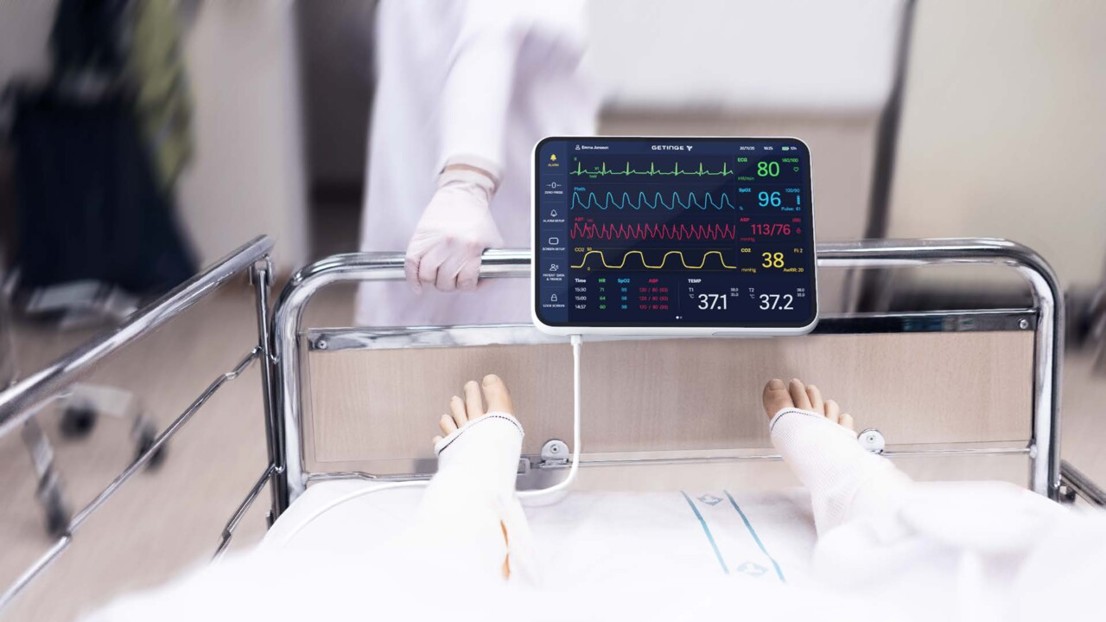Swipe to see all projects from the APD 'Future Intensive Care Monitoring' course.
Image:Jens PerssonPioneering the next generation of intensive care units
The first few minutes and hours spent at an intensive care unit (ICU) can be vital, literally. The speed and quality of care often affect patients' lives for years to come. In a project with Getinge, APD2-students explored new design solutions for vital sign monitoring in an ICU.

ICU's have become a hot topic since the outbreak of Covid-19 last year. The overburdened health care workers in ICU's across the world have become the faces of the ongoing pandemic. At a time when their crucial contribution to society can hardly have escaped anyone, the second-year students at the MFA APD Programme embarked on a journey to try to make their jobs a little bit easier.
While the students' design concepts weren't specifically geared towards solving problems informed by the pandemic, Thomas Degn, programme director for the MFA Programme in Advanced Product Design, believes that they may still serve as an inspiration for the next generation of ICU's.
"Although many of the opportunities that were identified related to generic needs in an ICU, these have all been amplified through the pandemic and the strain it has put on the entire health care system", says Thomas Degn.
Any improvement to the ICU environment will be beneficial in the aftermath of the pandemic as well as the next time we might experience something similar
Thomas Degn, MFA APD Programme director
Understanding the ICU experience
At an ICU, patients are treated for severe or life-threatening illnesses and injuries, which require constant care, close supervision from life support equipment and medication in order to ensure normal bodily functions. All ICU patients' vital signs are monitored and the information from the monitoring equipment helps physicians, doctors and nurses take important decisions. Needless to say, equipment that offers accurate and timely data is of utmost importance to safeguard the well-being of patients.
Today's monitoring equipment consists of sensors which are placed on the patient in different ways. The sensors are connected to a monitor (or several monitors) transforming the data into numbers and waveforms. Here, students explored new design solutions for vital sign monitoring during different types of therapy and recovery stages at an ICU.

Shuai Li, Sonya Swan, Rafaela Stillner & Anna Gębala during the ideation phase for their design Concept, EMI.
ImageJens PerssonIn close dialogue with health care workers, and the representatives from Getinge, the student design teams studied the complexity of the ICU environment: the different types of monitoring, the technology of today and the potential areas for improvement and innovation. During the following physical prototyping sessions students ideated, iterated and evaluated new ideas. Soon, the four design concepts began to take shape.
"We had the opportunity to talk with healthcare professionals and test things ourselves in real world 'ICU training environments'
Rafaela Stillner, student APD programme
"We took some time to be able to understand the types of equipment and procedures performed in an ICU and then we began validating our concept through interviews and remote testing", says Rafaela Stillner who developed the EMI concept together with team members Sonya Swan, Anna Gębala and Shuai Li.
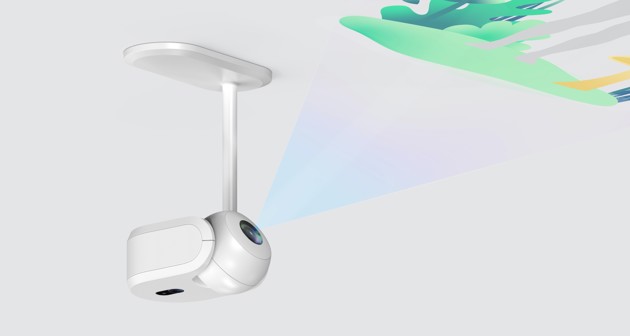
The EMI smart projector displaying mobilization exercises on the ceiling surface.
ImageUmeå Institute of DesignThe EMI system aims to make early mobilization easier and more engaging for ICU patients and staff. Early mobilization refers to the inital physical activity after trauma that aims to bring about positive physiological changes, thus enabling a faster recovery. Although early mobilization can decrease a patient's hospital stay by 50%, it's not yet a standard routine in current ICU's. The EMI design concept consists of a monitoring solution, a smart projector and software. When 'Early Mobilization' is performed, the EMI wireless monitoring device enhances the patient's freedom of movement. A projector guides the ICU staff, patients' relatives, or the patient, through mobilization exercises projected on the ceiling.
From jumble of wires to wireless
Another student design team identified a pain point relating to the cumbersome wire-setup of today's ECG monitoring. Most people will know ECG as the familiar jumble of cables hooked up to the patient's chest area. Today's cluttered sensor setup routinely has to be unplugged and cleaned, a time-consuming job. The untangling of the five-cable setup requires a lot of effort for intensive care nurses and the many wires also slow down the patient's recovery process by limiting their ability to move freely.
In order to tackle this problem, the students developed a solution where the traditional five-cable ECG monitoring setup is reduced to a single-line solution that feeds gathered data wirelessly into the current monitoring system. The sensor, called Array, can be adjusted to different body shapes and is designed to sit on the human body. Its minimal shape makes it easy to clean, intuitive to handle and declutters the patient's appearance.
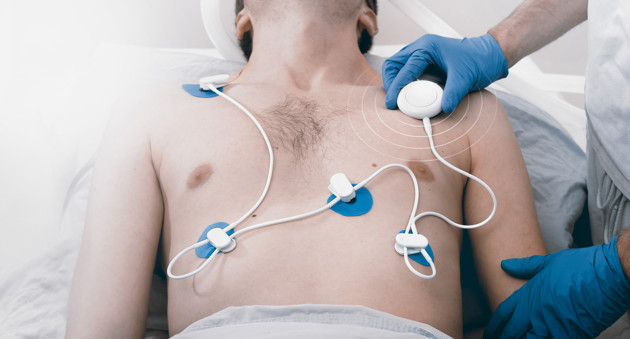
The wireless ECG monitoring system, Array.
ImageUmeå Institute of DesignArray hopefully represents the next generation of the ECG monitoring setup, where less cables are being used
Tim Schwarz, student apd programme
"We believe that it can be implemented into the current practices of intensive care. It is designed to help streamline the workflow of health care professionals and improve the patient's comfort during intensive care treatment", says Tim Schwarz, who developed the product together with design team members Marius Kindler, Jacob Jensen and Johannes Rieder.
The opportunity to get first-hand insight into the daily work situation of health care professionals at an ICU was not only eye-opening to students, it was clearly an affecting experience on a deeper human level.
"One of the biggest challenges was to get a holistic understanding of the ICU workflow. The nurses and doctors that look after the patients 24/7 have all their processes dialed in and they have a deep knowledge of the matter which was overwhelming at times. When researching the matter one difficult aspect was taking in the apparentness of human fragility and the images of tragic events that came up. It generated a deep respect and admiration for the people working in this environment.", says Tim Schwarz.
